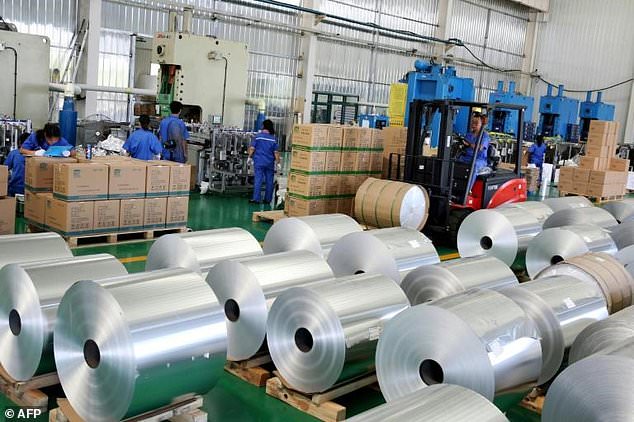WASHINGTON, Aug 2, 2018 (BSS/AFP) – The United States may jack up the
tariff rate on the next $200 billion in Chinese imports it plans to target as
it pressures Beijing to reform its trade practices, US officials said
Wednesday.
President Donald Trump asked the US Trade Representative to consider
increasing the proposed tariffs to 25 percent from the planned 10 percent,
USTR Robert Lighthizer said.
“We have been very clear about the specific changes China should
undertake. Regrettably, instead of changing its harmful behavior, China has
illegally retaliated against US workers, farmers, ranchers and businesses,”
Lighthizer said in a statement.
Officials however downplayed suggestions the move was intended to
compensate for the recent decline in the value of the Chinese currency, which
has threatened to take much of the sting out of Trump’s tariffs by making
imports cheaper.
The US dollar has been strengthening since April as the central bank has
been raising lending rates, which draws investors looking for higher returns.
“It’s important that countries refrain from devaluing currencies for
competitive purposes,” a senior administration official told reporters. “But
I wouldn’t draw the conclusion that the announcement we’re making today is
directly linked to any one practice.”
China warned that it would be ready to retaliate.
“Blackmail and pressure from the US side will never work on China,”
foreign ministry spokesman Geng Shuang said at a regular press briefing prior
to Lighthizer’s statement on Wednesday.
“If the US takes measures to further escalate this situation, we will
surely take counter-measures to firmly uphold our legitimate rights and
interests.”
Washington and Beijing are locked in battle over American accusations that
China’s export economy benefits from unfair policies and subsidies, as well
as theft of American technological know-how.
Trump has threatened to slap tariffs on virtually all of China’s exports
to the United States.
Officials said they remained in regular contact with their Chinese
counterparts but could announce no new meeting.
Geng said trade disputes must be resolved through talks that are based on
“mutual respect and equality”.
– Boxed into a corner? –
The US already imposed 25 percent tariffs on $34 billion in Chinese goods,
with another $16 billion to be targeted in coming weeks.
On July 10, Washington unveiled a list of another $200 billion in Chinese
goods, from areas as varied as electrical machinery, leather goods and
seafood, that would be hit with 10 percent import duties.
Increasing the rates to 25 percent could make them significantly more
painful.
The comment period on the proposed penalties, which includes public
hearings where business can ask for exemptions, due to take place later this
month, would be extended into September, the officials said.
Much of American industry and many members of Trump’s own Republican Party
have expressed outrage but have not so far successfully thwarted Trump’s
trade policies.
The US Senate last week passed legislation which if enacted would lower
trade barriers on hundreds of Chinese imports.
Jake Colvin, vice president of the National Foreign Trade Council, said
the Trump administration could be boxing itself into a corner.
“It’s hard to see how this action lends itself towards a resolution to
what is increasingly a trade crisis,” he told AFP.
Trump and senior administration officials believe the volume of US imports
and vigorous health of the American economy give Washington an advantage in
the current confrontation.
But Fred Bergsten, founding director of the Peterson Institute for
International Economics, told CNBC that China would be able to absorb blows
more easily than Washington.
“They can expand their stimulus, fiscal spending, bank lending,” he said.
“They can compensate much better than we can. They come from a much higher
base.”
And Bergsten warned that the US economy is likely to slow and a trade war
only makes that expected decline worse.



